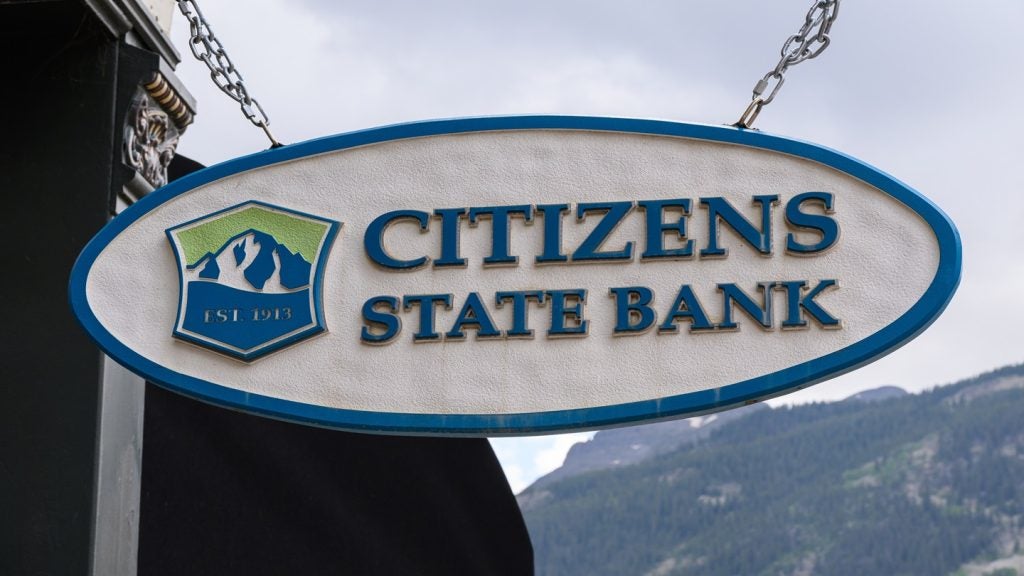a remarkable growth story over the last three years, expanding its
Central and Eastern European retail franchise and increasing profit
11-fold. William Cain speaks to Aris Bogdaneris,
the man behind the bank’s consumer strategy, about how it will
build on its success.
Aris Bogdaneris, Raiffeisen International’s head of retail banking,
has told RBI the Austria-based banking group will subtly shift
focus after an aggressive three-year customer acquisition strategy.
He said increasing deposits, improving customer service and
developing its affluent banking business will form the main parts
of its strategy to 2011.
He aims to open 735 new branches in Central and Eastern Europe with
around 220 of those likely to be in Russia, where Raiffeisen
International is now the largest foreign bank (see RBI
588). The rest will be focused on its core markets in two
other Commonwealth of Independent States countries, Romania and
Ukraine, as well as growth markets in south-eastern Europe.
Over the past four years, Raiffeisen International, the publicly
listed Central and Eastern European wing of Austria’s Raiffeisen
Zentralbank Ősterreich (RZB), has built up a strong retail banking
franchise, present in 17 countries. Bogdaneris said the bank
remains “open to acquisitions”, most likely in Kazakhstan or its
Central Asian neighbours. But after its customer acquisition push,
the bank is now concentrating more on generating extra income from
existing customers through increased cross selling.
Raiffeisen classifies people with more than €80,000 ($130,000) in
personal financial assets as affluent, a segment the bank will now
target with specific products and services – something it has not
done before. Bogdaneris estimates 10 percent, around 1.4 million,
of the bank’s customer base falls into this category.
Bogdaneris said: “The way we look at it, it is like passengers on a
plane. You have first class, business class and economy. Today most
of our customers are sitting in economy, even though they might be
business class customers. So the exercise now is to segment and
figure out how many of these customers should be sitting in first
class and how many should be sitting in business class.”

US Tariffs are shifting - will you react or anticipate?
Don’t let policy changes catch you off guard. Stay proactive with real-time data and expert analysis.
By GlobalDataThe bank has already had some success with this in Slovakia through
its subsidiary Tatra banka. The plan is to expand that business
line across the network. It will push products such as fund
management, savings accounts and insurance, particularly in Russia,
where Raiffeisen has a significant “super-rich” segment – customers
with more than €200,000 in savings.
This approach is designed to increase deposits and loyalty,
something banks across the world are looking to achieve. Raiffeisen
International has a healthy-looking funding structure, with 63
percent of loans funded by customer deposits, although its lending
is growing faster than deposits. The rest is made up of medium- and
long-term refinancing (17 percent), short-term financing (18
percent) and subordinated liabilities (2 percent).
“To grow lending, you need to fund it and as funding gets more
expensive in the wholesale markets, and gets more dear just
accessing it, you need to raise cheap funding locally, through your
deposits and through your network. Everyone is trying to do the
same thing, so everyone is trying to get deposits now. If you do
not grow deposits, your lending starts to get curtailed,
obviously.”
One of the big challenges facing Raiffeisen International is
managing its rapidly growing banking empire. The bank has a
relatively high cost-income ratio for an emerging markets outfit,
at 68.3 percent, primarily down to investments in its branch
network. It is working on reducing costs through a centralised
cards processing unit in Bratislava and a payments centre in
Romania. But Bogdaneris believes the secret to a successful CEE
franchise is finding the right balance between centralisation and
local entrepreneurship.
He said: “We are on the path to becoming more like a banking group,
but I do not think we are going to become one of those major
international money centre banks. The strength of Raiffeisen is
being local – we are always trying to find that balance between
central guidance and local entrepreneurial growth – it is a
delicate balance we are trying to find. The moment we try and
become a headquarter monster, we will kill the very thing which
makes us successful.”
In addition to its branch expansion programme, the bank is involved
in a branch revamp strategy, focused mainly in the big cities where
most of its business is done. Raiffeisen is working with design
specialists Allen International to create a different customer
experience, with around 600 of the bank’s branches undergoing a
change.

Bogdaneris said: “If you go into Ikea, you will see how they route
you all the way to the cashier. We are doing a similar thing in our
branches. It will be more interesting to the customer, and more
conducive to selling. It also has to be a visual experience. If you
ever go into an Apple store, and you are amazed by the visuals – we
want to do the same.”
Distribution has been key to the retail bank’s rapid development
since 2004 – a year it made a profit of €43 million.
Then, Raiffeisen International had just started to seriously
develop its consumer franchise. Since 2004, retail banking profit
before tax has grown 11-fold to €487 million, and now makes up 39
percent of the business’ profit. Lending has grown seven-fold,
branches have increased from 916 to 3,015 and customer numbers from
5.1 million to 13.7 million.
That is equivalent to 130,000 new customers a month – 239,000 a
month if acquisitions are included. Bogdaneris told RBI:
“Once we have built the distribution, everything seems to follow. I
think retail banking is all about distribution if you are in the
mass retail game.”
Raiffeisen International’s 2007 results, which saw retail banking
profit before tax jump 85 percent compared to 2006, marked the end
of a three-year strategic plan across its business. The bank’s
success has been built on expanding its branch network, increasing
mortgage lending and upping its risk management capacity to keep
pace with lending growth.
It was also helped by the bank’s strong corporate business in the
region. Prior to 1999, Raiffeisen International was primarily a
corporate bank. That business gave it a foothold in many of the
markets in which the retail bank now operates. A significant
portion of its first retail customers came from securing the
business of employees of the corporates it served across the
region, although that is no longer the main element of its growing
customer base.
Bogdaneris added: “Generally, the most over-riding success factor
for Raiffeisen is getting there first. Raiffeisen has generally
been the first foreign bank in many of the markets in which it
currently operates, and being there first means, usually, you
win.”

COUNTRY SNAPSHOT
Growing with Russia
Aris Bogdaneris, Raiffeisen International’s head of retail banking,
believes Russia is a prime market in which to operate as the global
race for retail deposits picks up. Banks across the world are
looking at ways to increase deposits to fund lending activities.
Bogdaneris said the issue is one of the biggest areas of concern in
retail banking, but added access to Russia’s consumer base would
help banks raise valuable deposits.
He told RBI: “The Russian market is definitely one of our
key markets to attract deposits. The economy is booming and there
is still a lot of money hidden under mattresses. Moscow is a city
with one of highest density of millionaires worldwide [and] there
is a considerable potential not only for deposits but for more
sophisticated investment products such as asset management and life
insurance, areas where we are becoming more and more active.”
Raiffeisen International is the largest foreign player in Russia.
After combining its Raiffeisenbank and Impexbank subsidiaries in
the country in 2007 it now has 250 branches. Bogdaneris said having
“twice or three times as many as we already have” was a longer term
target for the bank.
The bank is in the process of integrating its two Russian
operations, Impexbank, which it acquired in February 2006, and
Raiffeisenbank, its greenfield business, set up in 1996. But the
task is not as easy as it might seem: from operating across three
different time-zones prior to the Impexbank acquisition, Bogdaneris
is now managing a group which operates across eleven.
Its most easterly Russian branch is only around 400 miles from
mainland Japan; it is quicker, he points out, to fly to Chicago
from Moscow than it is to get Russia’s Far East.
Bogdaneris said: “With the take-over of Impexbank… we had to
centralise information flows and processes while involving far
flung branches located in Kamchatka [in the Russian Far East] or
near Lake Baikal [Southern Siberia]. That is obviously not an easy
task over such vast distances.”
He added: “Building an efficient network structure in Russia
requires finding the proper balance between centralising management
functions to Moscow, or St Petersburg, to reduce costs and improve
controls versus devolving management responsibilities regionally to
be more responsive, particularly with respect to sales management,
risk, collections and security, to name just a few. There is no
rulebook on how to do it – particularly in a country of this
size.”
In terms of retail banking products, Raiffeisen started out with
auto-lending but has rapidly expanded into mortgage and Bogdaneris
expects “significant growth” in its unsecured lending businesses,
especially personal cash loans and cards. He also sees growth in
savings products, fund management and insurance.
Bogdaneris believes branding will play an important role in the
country, and thinks his bank can take advantage of its 12-year
presence in Russia. A strong brand will also help attract and
retain talented staff, which Raiffeisen has found to be a major
challenge across Eastern Europe. Bogdaneris adds there is a demand
for a “Western banking experience” in Russia, with new ideas and
established expertise.
One of the biggest challenges for Raiffeisen is the strong increase
in the price of land and buildings. Bogdaneris said: “We have to be
even more selective and choosy when selecting branch locations to
ensure we can still get a rapid payback. It adds a further
challenge to any bank pursuing a branch expansion strategy.
“The sheer size of Russia geographically presents enormous
challenges. The skills required to manage staff remotely becomes
critical. This cannot be underestimated.”
.gif)







